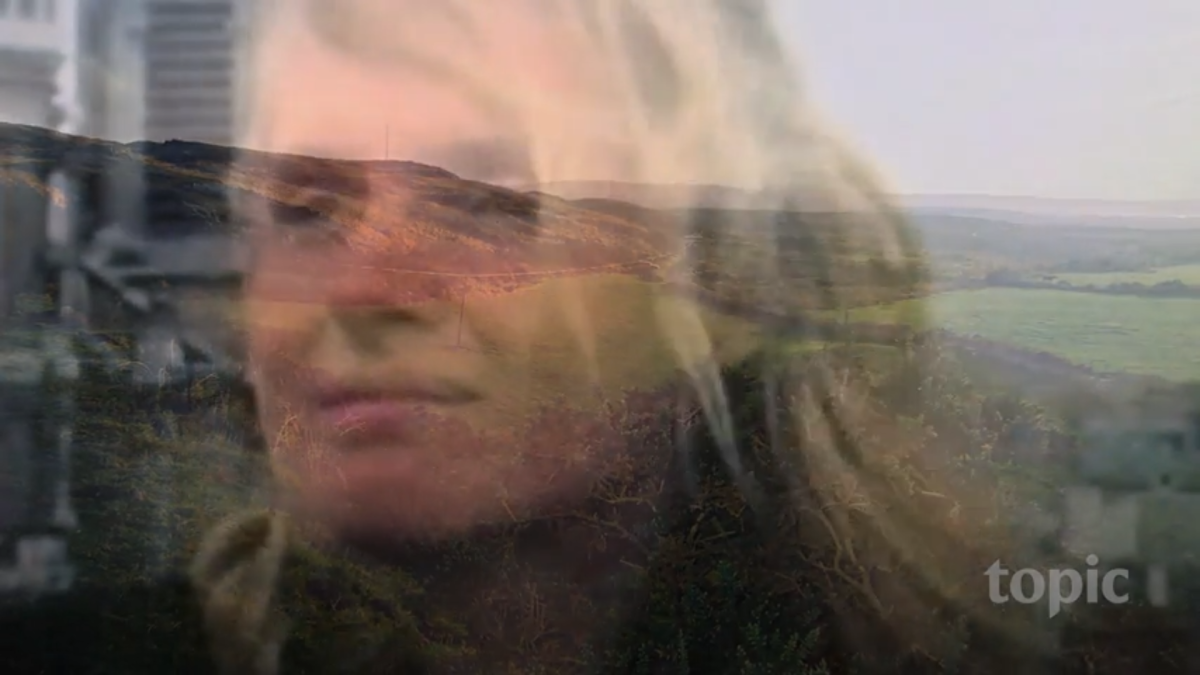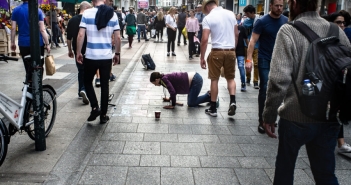Jim Sheridan is a significant figure in the international film industry because of his creativity and talent. He has made an influential documentary, ‘Murder at the Cottage’, about the Sophie Toscan du Plantier case.
In the recent Cassandra Voices Podcast, he explained why he believed Ian Bailey is innocent and much maligned.
In a recent blog, I explained why I believe that the thought processes making Jim Sheridan such a gifted filmmaker may be unhelpful when seeking to find Sophie’s murderer. Here are two issues I raised in my blog: Hitchens’s Razor and the Myth of Bailey the Victim.
Christopher Hitchens’s Razor
The brutal murder of Sophie Toscan du Plantier is a fact, not a literary exercise nor a dinner party game where people share their theories of the crime. In the Cassandra Voices interview Sheridan spoke about his relationship with Bailey, explaining why Bailey was ‘tortured’ for twenty-seven years, and why he insists Bailey did not murder Sophie. The content was bizarre and told us much about the workings of Sheridan’s thinking, but little about the murder of Sophie.
Topics included a child floating in amniotic fluid, the guilt felt by Jim’s mother over his grandmother’s death, the famine, a landlord during the famine being called Bailey, a tired old concept called tribal memory, scoring 180 in darts, the mis-attribution of a Life of Brian sketch, Michael Collins, and the killing of Irish people in Clonakilty.
I am no legal expert, but am still certain none of this would be evidence introduced by either side in a murder trial for Sophie. It is irrelevant and a complete distraction from the seriousness of the case. One could have as easily brought up astrology, tarot cards, and reading the runes for consideration.
When we apply Christopher Hitchens’s razor to Sheridan’s comments: “What can be asserted without evidence can also be dismissed without evidence.” – we see that all those interesting concepts contain no evidence concerning the murder. They can be dismissed. The stream-of-consciousness outpourings of Mr Sheridan are fascinating. We see how different personal and cultural themes may be woven into a beguiling and entertaining narrative. However, finding the murderer of Sophie is about evidence. There can be no room for the evidence-free assertions highlighted by Christopher Hitchens. This will not be the last time Hitchens’s razor will be applied.
Ian Bailey’s many confessions
Sheridan has dismissed each of Bailey’s 10-plus confessions. In the podcast, he focuses on one described by a senior journalist, Helen Callanan. Both she and Bailey have given several statements about a confession to AGS. Mr Sheridan was not present at that meeting. Mr Sheridan’s narrative is that Bailey learned he was being sacked, and he responded by using heavy irony: as he was a master of irony. Sheridan claims that the confession was ironic. He goes on to say when Callanan told her boss, Matt Cooper, about the confession he did not believe her.
First, we are told Mr Bailey had been informed that he was being sacked. The implication is that the sacking was a trigger that provoked Bailey’s comments. This is not supported by evidence. Bailey was a freelancer, working from article to article or project to project. He may not be given further work but he could not be sacked. Furthermore, there is not a single reference to him being sacked in his statements nor those of Helen Callanan. Is the sacking an assertion without evidence or is their evidence that Mr Sheridan could share with us?
Second, Sheridan insisted, “Bailey was English perfection in sarcasm and irony.” That is Jim’s opinion. It is an opinion that fits his Bailey never-confessed narrative. For a teller of tales that will suffice, but we need more than assertions. Is it true? What is noticeable about what Bailey has presented on social media, in written articles, and said in countless interviews, is that he is a man bereft of irony. There is no perfection here. Indeed, with Bailey, there is evidence to the contrary. There is no evidence supporting this assertion. He is dull, crude and infantile. The signed statements by Helen Callanan could not be clearer. She saw no irony in what was said. We know she was present, that Bailey was a liar, and Jim was not there … so who to believe?
Finally, Jim Sheridan tells the podcast listeners that he doubted very much that Matt Cooper, Callanan’s editor, thought that Bailey had admitted his guilt to Callanan. I have never seen a statement from Cooper to that effect. We are not given any information about the alleged discussion between Callanan and Cooper. When Mr Sheridan says he “doubted very much” is that an assertion without evidence, or is there something more substantial?
In The Murder of Sophie: How I Hunted and Haunted the West Cork Killer (2020), Michael Sheridan’s brilliantly detailed book on the case, there is no mention of any sacking nor of Matt Cooper. One can only hope that the source of these later iterations was not the pathological liar, Ian Bailey.
As a story, Jim Sheridan’s narrative is engaging. It is both coherent and plausible. For a consumer of fiction, it works. However, a good story is not grounds to dismiss the observations of a capable journalist. If there is hard evidence to back his narrative, I hope Mr Sheridan will share it; if there is none he ought to declare it.
Elsewhere Sheridan dismisses all the other confessions. The evidence shows there have been more than ten confessions made. From a teenager through to older adults, male and female, people with a range of occupations. The confessions were made with Bailey sometimes drunk, sometimes sober, and in a variety of emotional states. They are made in different ways. They are not all attributable to Bailey’s non-existent irony skills. There is nothing to indicate any of the statements about Bailey confessing were made by dishonest people with a vested interest in Bailey being convicted. However, the tired and emotional Bailey was repeatedly a dishonest man in the statements he made to vindicate himself.

The myth of Bailey the victim
27 years of torture unable to move unable to leave, branded a murderer without charge.
Jim Sheridan
We know Bailey was charged and found guilty (in absentia) in France. Jim Sheridan asserts Bailey was tortured for twenty-seven years; that he was an innocent man, badly let down. We are told his life was miserable. All the time it is implied that he was a victim. Poor Ian.
I do not believe for a moment Sheridan would give this foul-mouthed thug a free pass. It is more likely he did not take a close look at the way the man behaved when he was not on ‘best behaviour’ with Jim. I took a look at Bailey in my forthcoming book The Pervert in the Hills. The man was odious. A torturer, not the tortured. He inflicted pain for an exceptionally long time and kvetched when he started to get a little back.
Is anyone feeling Ian’s pain? When you gather evidence on the man the notion of him being a victim is unsustainable. When Bailey is judged on actual long-term actions rather than short-term impressions it is difficult to feel sympathy for him.
Jim Sheridan is in good faith seeking to understand what happened to Sophie. I do not think old historical events, a mix of disparate notions, evidence-free assumptions, or unjustified sympathy for Bailey holds the key to discovering the murderer. Thankfully a well-put-together circumstantial case has already shown us Ian Bailey did it. He was a despicable man. He was a foul, malignant narcissist who, I believe, murdered Sophie Toscan du Plantier.
The Pervert in the Hills: How Ian Bailey, the monster at the heart of the Netflix documentary Murder in West Cork grew to hate me by J P Holzer on sale from April, 2024.




